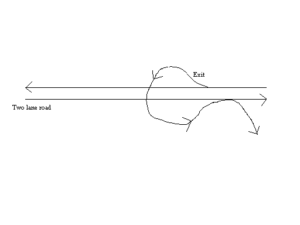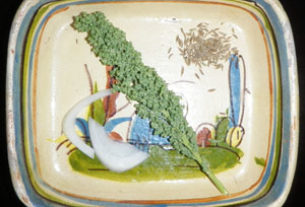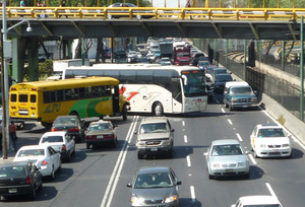Harry and company are moving to Aguascalientes. They are fed up with Guadalajara, with the high rents, the traffic congestion, and the noise (car horns, stereos, drunks, parties, dogs, and church bells). Mary and I bided our time as they explored several towns, looking for a better place to live. They finally settled on Aguascalientes, bringing back glowing accounts of what a nice place it was.
In the meantime, Mary and I had grown more attached to Sam. We started referring to him as our nephew, and he in turn, knowing of our attachment to Harry, Simon, and Alejandro, couldn’t do enough to help us – in his effort to keep us in Guadalajara. We had pretty much decided to stay in Guadalajara, but decided Aguascalientes deserved at least a look. I had read that in a survey of 23 Mexican cities, Guadalajara had come in as number 21. Besides, it had been over two months since our last major road trip.
The garage where the White Bullet (La Bala Blanca) was being worked on had given us another car, a Pontiac, after we returned the Volkswagen. This car was another gem. The outside wasn’t too bad, but the interior had been trashed by previous drivers. The horn was completely missing, having been ripped out of the steering wheel. The cover of a little compartment between the bucket seats had been broken off from its hinge and was missing. The radio didn’t work, nor the air conditioning or the cruise control. It’s sad how some people treat things they don’t own.
But the car was heavy and ran fairly well in city traffic, so Mary and I decided to head out towards Aguascalientes (which means “Hot Waters” in Spanish). We stopped at a gas station at the edge of town where we had the car topped up (by the way, if you want a hundred pesos of gasoline, say cien pesos, not un cientos – cientos is used for two hundred and up – I wound up paying for 200 pesos of gas when I thought I had ordered 100).
As we waited while the attendant filled the car (no self service in Mexico and no tipping unless the attendant does something extra like washing your windshield or checks your oil), I caught a whiff of Pemex’s gasoline. It stinks. It smells like it has benzine or something mixed in it. I wouldn’t work at a Mexican gas station for anything – too much of a chance of getting cancer.
Mary asked the attendant, who was a woman, what the current price of gas was. The attendant replied that it was 5.52 pesos per liter, or about $2.40(US) a gallon. Not too bad when you consider that nobody else in the country is allowed to sell gas.
We headed down the road trying not to hit pedestrians who were crossing the road at random places. Once we got up to highway speeds we discovered that our car had no shocks. Every dip or bump in the road caused the car to start bobbing up and down, and, since Mexican roads have a lot of dips and bumps, we soon felt like we were in a small boat in the middle of the ocean – just bob, bob, bobbing down the road.
After a few minutes Mary started complaining about the sun – it was shining on her arm. She’s got this notion that 75% of the time the sun is on her side. She thinks I arrange things that way. I was hoping she wouldn’t notice.
In an effort to placate her I rolled down the back windows to get some air circulating. We immediately discovered another defect in the car. A really deep rumbling sound started up. The interior of the car was resonating with the pressure wave of the incoming air. We couldn’t stand it, so we were forced to open the front windows to get air.
We were driving down the cuota (toll road) to Aguascalientes when we started seeing something I had never seen on a cuota – potholes. Here we were paying tolls ($40 US round trip), driving on a four lane divided highway, and dodging potholes. At one point I had to use both lanes to weave through a particularly bad patch of potholes. And these weren’t small little bitty potholes, either. Some were a foot deep. Hitting one of those babies would wreck your car and probably put you in a hospital or morgue.
By studying the map, Mary and I had determined that if we took a secondary road to hook up with another cuota we could save 30 miles off our route. As we got near our turnoff, a sign appeared that indicated that the next exit would lead to Mexico City. The road continued on past the exit.
I stayed in the right hand lane continuing past the exit. Suddenly the right lane ended. There was a guardrail in the middle of the lane, parallel with the left hand lane. I quickly switched lanes, but I remembered the old saying, don’t drive at night in Mexico. That stupidly placed rail was one of the reasons why.
The left lane circled around and debouched into a small paved area where one could choose which road to use. We choose the one marked as leading to Aguascalientes. It quickly became apparent that we were on a POS (piece of shit) highway. It was a very narrow paved highway, filled with potholes. However, there were lots of trucks and busses coming from the direction of Aguascalientes, so we pressed onward, dodging the potholes as best as we could.
We came upon a road crew that was actually working at filling the potholes. As we drove past I saw they were squirting hot liquid tar into the holes and then filling them with asphalt. The asphalt was so dry that it almost looked like dirt. It’ll be interesting to see how long the potholes will stay fixed.
As we neared our connection point with the second cuota the road became exceptionally bad for a short distance. The paved road was deeply rutted where a car’s tires normally would travel and yet the middle of the road was heaved up at least 12 inches from the bottom of the ruts. I killed our speed as fast as I could, but we still hit the ruts pretty fast. My main fear was that the high middle of the road would tear out the bottom of the car, but I managed to maneuver through it without suffering any damage.
My best guess is that overweight trucks caused the damage to the road. I also suspect that they also cause all the potholes. I questioned Mary and she confirmed that she had never seen a scale to weigh trucks in Mexico. It’ll be interesting to see what effect NAFTA will have on Mexican truckers. Once they are allowed to drive in the US, they’ll have to start living with weight limits. Maybe Mexican roads will benefit by that.
 The turnoff to the second cuota was really unusual (see diagram). You had to take the exit by first going right, then curve left and cross the road, continue turning left until you are partially back in traffic going towards where you came from, and then bear right to get to the cuota. The whole thing is amazingly dangerous and confusing.
The turnoff to the second cuota was really unusual (see diagram). You had to take the exit by first going right, then curve left and cross the road, continue turning left until you are partially back in traffic going towards where you came from, and then bear right to get to the cuota. The whole thing is amazingly dangerous and confusing.
Once on the cuota, it was just a matter of minutes until we arrived at Aguascalientes, which bills itself as the home of Faros cigarettes. Mary says that Faros are the cheapest cigarettes in Mexico.
We drove right into the heart of downtown Aguascalientes, found a parking spot, and managed to snag a taxi. The taxis in Aguascalientes are painted red, unlike the yellow ones in Guadalajara. Mary did some bargaining and managed to hire the taxi for an hour for the equivalent of $15 US. The deal was that the taxi driver would give us a tour of the city while answering our questions about life in Aguascalientes. For once I could sit back and enjoy sightseeing.
One of the first things we noticed was that Harry’s report that there were street signs on every corner was indeed true. It was wonderful to see everything clearly marked. And not only that, but the streets ran in straight lines at right angles to each other – completely unlike Guadalajara.
I couldn’t get over the fact that the sidewalks were level and not buckled by tree roots. People could actually safely walk around. Wonderful!
We noticed police driving around in little four wheel ATVs. The taxi driver, whose name was Jose, said that it was safe to walk the streets at night – that the crime level was low. He further volunteered that people did not have to worry so much about their car being stolen like people do in Guadalajara. Jose had had a brother attending a University in Guadalajara, so he was familiar with both cities.
We noticed that there were few glorietas and that traffic was flowing well, unlike always-congested Guadalajara (Mary marveled at a sign that declared that the stoplights on one street were synchronized for 50 kilometers an hour traffic).
Another thing we noticed was that there was very little trash. The town was clean. It had an air of prosperity. Jose said that 5,000 people worked at the Nissan car manufacturing plant that we had passed on the way into town. We liked what we were seeing.
Jose drove us into a gated community, complete with golf course, named Pulgas Pandas (panda’s fleas), which had very beautiful houses in it. I noticed right away that the houses did not have gates and bars over the windows (we’ve been in houses where there is a secondary gate inside the house that can be used to secure a portion of the house even further – Mexicans are very security conscious). Unfortunately Jose said the average rent there was about $2,000 US per month – outside our range.
Next Jose drove us past a really big shopping center that had a Wal-Mart, a Sam’s Club, etc, into a colonia called Bosques. The average rent there was about $1,000 US. We couldn’t help noticing that many of the houses were only one story high, a rarity in congested Guadalajara.
Next we drove into two more colonias, Del Valle Primera and Del Valle Segundo. Jose actually drove past his house in Del Valle Segundo and yelled out to his dog, who looked very puzzled at hearing Jose’s voice, but not seeing him. Rent in the Del Valle colonias ran about $350 US.
I made a remark about the buses not belching black smoke like they do in other cities. Jose informed us that cars had to pass an emissions test every year. Taxis and buses got checked twice a year. As a result, there was little pollution. In addition, Jose informed us that taxis could not be more than ten years old. This city was looking better every minute.
We noticed that there were no gringo faces to be seen. Jose confirmed that very few gringos lived in Aguascalientes, which was just fine with Mary and me. It seems that Aguascalientes is undiscovered territory to the average expat. It won’t be for long once word gets out.
We drove past a market similar to the San Juan de Dios one in Guadalajara. In Guadalajara the market is crowded and dirty. The nearby streets are narrow and choked with traffic. In Aguascalientes, the streets are wider, traffic flows, and I only saw one piece of garbage – a crushed soda bottle on the side of the street. You can’t eliminate jerks entirely, but what a difference from Guadalajara.
There were few lateral streets, which, in my opinion royally screw up traffic in Guadalajara. Drivers tended much more to stay in one lane – something I never thought I’d see in Mexico. Traffic islands were covered with crushed stone for a low maintenance cover, not like the bare dirt ones in Guadalajara.
We noticed that there were no advertisements taped to the gates of houses in Aguascalientes. In Guadalajara this happens constantly. More often than not the ads come unstuck, fall to the ground, and get blown around by the wind. This leads to quite a bit of litter blowing everywhere.
The only negative thing that Jose admitted to was that dogs in Aguascalientes do bark. Mary and I haven’t had too much of a problem with barking dogs, but they drive Simon crazy.
Jose drove us back to our car and gave us his business card along with his cell phone number. He told us he would be happy to help us house hunt if we decided to live in Aguascalientes. Mary, the tart, was smitten with his green eyes.
As we headed back toward Guadalajara, Mary and I discovered that we were both ready to move to Aguascalientes. The difference between it and Guadalajara was like the difference between night and day. You wouldn’t believe that the two cities were in the same country. In Guadalajara, anything goes. Aguascalientes seems to have rules.
Normally I hate rules. Every law that gets passed takes away somebody’s freedom – from the right to choosing whom you want to hire, to the right to do what you want with your own property or your own body. That’s why I consider calling the United States, “The Land Of The Free” to be a poor joke.
But seeing how having some rules works in Aguascalientes, I can now see that having a minimal set of rules can be a good thing. The problem is that a minimal set of rules never lasts – the list always grows. Aguascalientes, a city of more than a half million people, seems to be at the beginning of the cycle. It appears to be a great place to live. We’ll see.


